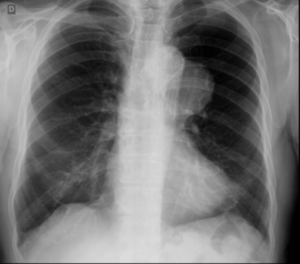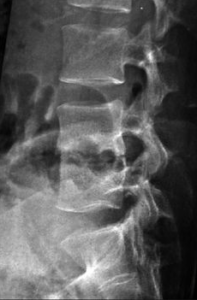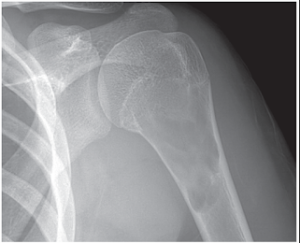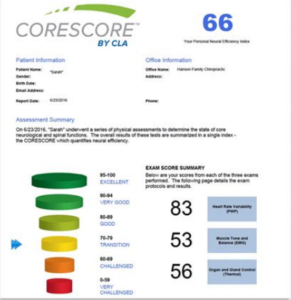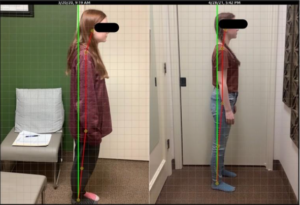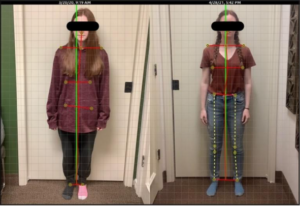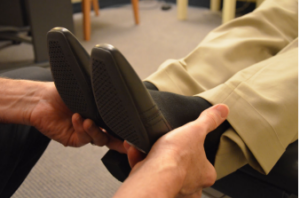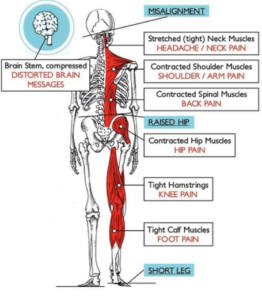Why do we take diagnostics seriously?
Many new patients get frustrated when they come to our office and they don’t get treated on the very first visit. I get that! You’re in pain and you want relief NOW! Totally understandable. However, would you like a surgeon to open you up without knowing where he needs to go or what is actually the problem? Hopefully, your answer is, NO!
Well, many times we’ve had patients come in with seemingly chiropractic issues and once we do the complete diagnostic study, we find they have something that is our of our scope of practice or that needs to be evaluated first with another physician before they start care in our office. Here are a few examples of what I’ve seen over the years. Mind you, their have only been a handful, but it was imperative that these patients get seen immediately by another physician and not our office.
X-rays are one of the most questioned by patients. We’ve been scared all our lives into thinking that X-rays are bad and we should avoid them at all costs. Although, I can understand this line of thinking, the science does not support that general spinal films, applied using a digital system, along with the filters we add, the radiation is reduced from 65-97% depending on the area imaged. https://eriksenchiropracticlaser.com/storage/app/media/xray-filters-021218.pdf
Story #1: When I was first in practice, maybe 2 years in, a gentleman came in with left shoulder and neck pain. He said that he was doing some heavy lifting and general physical activity when it became unbearable. It has been going on for about a week, ever since that day. Seems rather cut and dry. After doing the initial history, exam, and X-ray’s, I briefly looked at his films to make sure we could see all the structures that were important for evaluation, and I saw something rather suspicious. This is what I saw:
What you are seeing here, my friends, is a thoracic aneurysm! The pain upon exertion was due to this large vessel that was about to burst! This is instant death should it burst, but, can be very recoverable if found and addressed with a surgical procedure. At this point, I showed him what I found, made a copy of his films for the emergency room and told him to go directly there. This is an instance where this knowledge saved his life! I also want to say that he was under regular care by a cardiologist, who he went to first because it originally started as mild chest pain. The cardiologist did a brief exam and changed some of his medication and sent him on his way. I could have taken that information and not looked further, thinking that the cardiologist did his due diligence—I mean, it did seem very muscular and/or spinal in nature based upon the history of when the pain started. So, coming to that conclusion was definitely valid on the cardiologist’s part.
I continually go back to this example when patients are leery of taking films. Should I have adjusted this gentleman without films, the outcome may not have been a good one. Diagnostics are important not only to determine the course of care, but whether or not the problem IS a chiropractic one!
Story #2: A sweet women came in with low back pain that started about 3 months prior, really out of nowhere. It radiated down both her legs every once in a while when she bent over. This was interfering with her activities of daily living. She couldn’t take her walks anymore and even swimming seemed to aggravate it. Again, low back pain and sciatic-like pain is something chiropractors see every day. After taking films, I noticed severe bone loss in and between her L4/5 vertebrae. This is what I saw:
What you are seeing is known as discitis, or an infection of the disc which has now eaten into the vertebrae. This is an example of what is not a chiropractic case—until AFTER the infection has been taken care of by another physician. Infections of the spine and disc tissues creates a severe inflammatory condition that eventually spreads into the bone itself. This causes bones to become very prone to breaking and therefore a chiropractic adjustment, no matter how gentle, is contraindicated. I sent the films to a DACBR, a radiologist that specializes in spinal films, and they confirmed my findings. I then saw her for her report the next day and gave her all the pertinent information to her primary care physician so she could get to the appropriate caregiver. Before seeing me, she was seeing her primary care and only received pain killers and muscle relaxers—HE NEVER EVEN SUGGESTED GETTING AN X-RAY! What If we decided to do the same thing and caused further damage? Just another reason why we take our diagnostics so seriously here at HealthWorks!
Story #3: A young lady, a cheerleader and gymnast came in with neck, back and arm pain. Given how hard she pushes her body to do all the things that gymnasts do, this seemed like an obvious case to me. After all, she trains for gymnastics 6 days a week and somehow finds time for cheerleading AND school work! Made me tired just listening to her go through her day! After taking her films, I noticed something odd in her arm. A little spot that seemed not quite right. This is what I saw:
Do you see how the arm bone (humorous) looks like it has “bubbles” or part of the bone is missing? I sent it to the radiologist and as it turns out, it was a benign bone cyst. Happens mainly in children and young adults and can cause a break of the bone because the cyst decreases bone density in the region. Unfortunately, I had to tell her that she needed to refrain from her cheerleading and gymnastics and get an appointment with her pediatrician to figure out the best course of action. Once she was under care and getting the cyst taken care of, we were able to start care for the other issues associated with her neck pain—which was a chiropractic problem, and she made a full recovery in all areas. Sometimes collaboration within the healthcare field is needed for the very best outcome for patients. To me, it’s a win-win!
These are just a few examples that involve the taking of x-rays and why it’s so important to image what’s going on with the spine on the inside. Needless, to say ALL the patients were extremely thankful (ok, well maybe not the cheerleader), to get this vital information.
How about the other diagnostics that HealthWorks performs? Seeing what the structure of the spine looks like on the inside is just one of the vital tools we use to evaluate your case. Each and every patient that walks through our doors may have similar issues like headaches, neck pain, low back pain, etc., but each present vastly different and therefore getting all their information is critical to create a proper care plan.
The CoreScore
The CoreScore evaluates the function of the nervous system. The spine and spinal nerves reside in the spinal column and therefore the evaluation of this function is crucial in finding out what nerves are irritated and what nerves are functioning well. This allows us to determine the cause of the problem and not simply chase your symptoms around.
Here’s an example of a CoreScore report:
What do the numbers mean?
Think of these numbers like grades; the higher the better, with 100 being the perfect score. We use these scans not only to find out where you are when you first come in, but how you are progressing during your course of care.
What is Heart Rate Variability (HRV)?
This scan shows us how well your body is able to adapt to external stressors-chemical, physical and emotional. In other words, how much ability you have to heal and change, and what kind of initial outcome we can expect.
What is a Surface EMG scan (sEMG)?
This scan, called a Surface Electromyograph, reveal surface electricity and the variations from one level to the next. Subluxations cause changes in muscle tone that show up on this scan as changes in surface electricity. It determines how well the nerves to your muscles are functioning.
What is a Thermal Scan?
This scan measures heat along your spine. When misalignments are present, there can be a change in temperature from one side to the other (asymmetry), due to changes in blood supply. This helps us determine what nerves, that supply information to your organs and glands, may be inflamed and irritated.
Overall, the CoreScore helps us determine the overall health of your nervous system. The nervous system is very elusive and where you feel the problem, may not be the cause. This, along with correlating your other diagnostics give us a great roadmap to determine the very best course of care for you individual case.
Posture/Palpation and Leg Check
I’ve gone extensively over how posture is so important when it comes to spinal health and well-being in previous blogs, so check those out too! Essentially, posture is the “window to the spine”. It allows us to see what muscle groups are functioning properly and which ones may be compensating depending on how your present. Here’s a great example of a before and after posture change after being under care:
Palpation is when the doctor feels your spine to determine what segments are moving and which ones are “stuck”. Vertebrae should rock evenly back and forth without any inflammation or tenderness around them. We also determine what muscles are more tense and tender—this feedback from you is a very important part of your case history.
The Supine Leg Check is one of the first neurological signs that the very top bone of your spine, C1/Atlas is out of alignment. What!? What do you mean? What do my legs have to do with my spine? Well, I’ll tell ya. The atlas surrounds part of the brain stem. The brain stem controls many things like your breathing, heart function and yes, your postural muscles. When the atlas is out of alignment, it puts subtle pressure on the brain stem causing it to send aberrant information to the postural muscles, like a muscle spasm on one side of your body that torques your hip and pulls your leg up. This make it look like you have a “short leg”.
This is an example of what an atlas misalignment does to your entire body!
Raise your hands if you feel like this! Imagine, just one tiny bone at the top of your neck could cause all these symptoms AND one very precise and gentle adjustment could help you feel like your no longer tied up in knots. SIGN ME UP!
Having a thorough chiropractic exam is vital to make sure what you are experiencing is a chiropractic issue or if we need to consult another practitioner. Without this knowledge both you and your chiropractor will not be able to be fully informed on how to proceed with your care.
Our promise to you
HealthWorks is dedicated to comprehensive and specific approach to taking care of spinal and nervous system needs. Let us help you find out how taking care of the most important system in the body will create optimal health that will last a lifetime!
If we find we’re not the best to help, we promise to refer you to someone who is.
